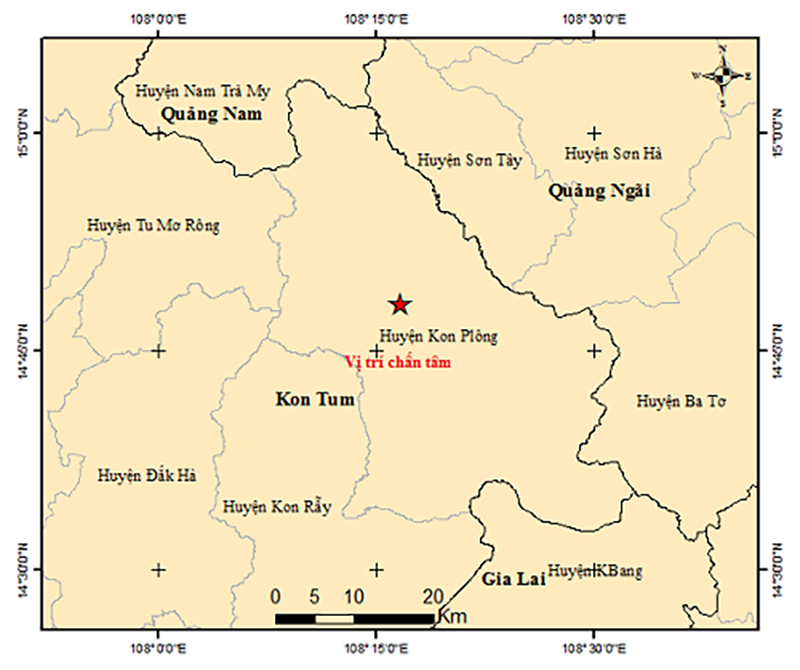
At 7:08 a.m. on July 29, the Earthquake and Tsunami Warning Center under the Institute of Geophysics recorded an earthquake with a magnitude of 2.6 on the Richter scale, occurring at a location with coordinates (14.805 degrees North latitude, 108.279 degrees East longitude) and a focal depth of approximately 8.1 km. This was the 11th earthquake of the morning in Kon Plong District.
According to the Institute of Geophysics, 21 earthquakes occurred in Kon Plong District on July 28. The strongest quake happened at 11:35 a.m., with coordinates 14.827 degrees North latitude, 108.245 degrees East longitude, a focal depth of approximately 8.1 km, and a magnitude of 5.0 on the Richter scale. The disaster risk level of this earthquake was categorized as level 2.
This was the largest earthquake ever recorded in the area. The quake caused some damage to public buildings and residential homes, with tiles and wall cladding being dislodged. Residents in the Central Highlands and Central Vietnam felt the tremors and shaking.
In an interview with VietNamNet, Dr. Nguyen Xuan Anh, Director of the Institute of Geophysics, stated that these were induced earthquakes, caused by the reservoir of a hydropower plant.
Between 1903 and 2020, Kon Plong District recorded about 33 earthquakes with magnitudes of 2.5 or higher. From 2021 to August 2022, the area experienced nearly 200 new earthquakes.
The Earthquake and Tsunami Warning Center continues to monitor these earthquakes closely.
Induced earthquakes are caused by human activities affecting nature, rather than natural earthquakes from fault zones. Induced earthquakes typically occur in areas with operational reservoirs, especially hydropower or large water storage reservoirs.
The pressure exerted by the water in the reservoir, combined with local faults and the increased stress from the large water column, leads to induced earthquakes. These earthquakes often follow a cycle, occurring after periods of water accumulation and during the rainy season.
Dinh Hieu